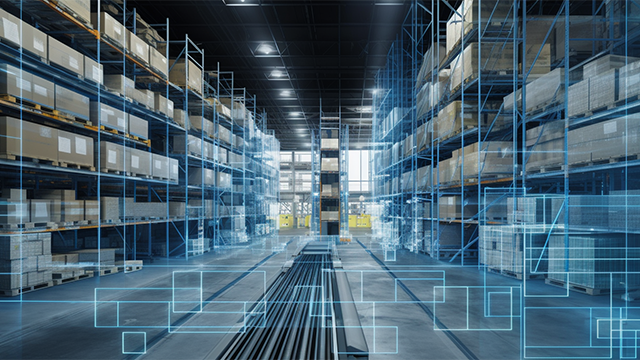2 min read
Leverage Computer Vision and Spatial Intelligence in Your Warehouse Solutions
![]() Dev Pro Journal
June 26, 2023 9:33:52 AM EDT
Dev Pro Journal
June 26, 2023 9:33:52 AM EDT

Creating a smart warehouse with AI can solve numerous client pain points.
As the supply chain becomes more complex and speed-obsessed, it is increasingly vital for warehouses to optimise inventory management and change how they operate. And while automation isn’t necessarily new to warehouses, nearly half still use manual processes and aren’t automated in all areas. Due to the pace and complexity of today’s logistics climate, it becomes tough for warehouse managers to know exactly where to start in their automation journey. And without guidance and a solid foundation to build upon, current warehouse systems could be set up for failure.
Although your clients have several options to choose from to increase warehouse efficiency, artificial intelligence (AI), computer vision and spatial intelligence can provide innovative solutions to benefit your clients with:
- Barcode reading accuracy
- Optical character recognition
- Deep learning for item identification and quality control
Further, warehouse computer vision and spatial intelligence can improve specific applications within those areas of operation.
- Goods Receipt – As goods arrive, computer vision can identify them, collect and store data from barcodes and text labels, and check packages or products for signs of damage. Additionally, spatial intelligence can detect dimensions and volume to help with storage planning.
- Track and Trace – Handheld barcode scanners depend on employees to scan each package or product throughout the warehouse and logistic processes. However, if an employee misses a scan, an item can become “lost” in the system. Computer vision can automate data collection and increase inventory accuracy. In addition, cameras track inventory movement, decreasing phantom inventory and losses.
- Quality Control – Nothing can spoil customer satisfaction and reduce systemic efficiencies more than incorrect orders. Computer vision can conduct QC and audits to ensure order accuracy. After picking an order, the AI automatically validates it against its contents. It can also flag incomplete or incorrect orders so they can be re-packed before they’re loaded onto a truck for delivery to the customer.
- Measure Cartons for Shipping – Computer vision and spatial intelligence can capture the shape and size of all packages on a pallet. Automating this process and increasing accuracy can mean significant profit gains. It can enable a business to optimise shipments based on dimensional weight, so they can appropriately charge their customers for shipping and minimise costs. These solutions can also help companies package and group orders efficiently to reduce shipping costs.
- Smart Palletizing – In today’s fast-paced supply chain, warehouses can’t afford slow palletising with handheld barcode scanners. Moreover, it takes labour and time and is prone to errors when items are missed.
Warehouse computer vision systems overcome the obstacles that stand in the way of operational efficiency and accuracy. For example, a machine vision system frees workers’ hands to move more boxes, speeding up movement through the warehouse. It also significantly improves scan accuracy because it captures essential data about each package, even with missing labels or missed scans.
Sell on Value
Automating a warehouse with computer vision or spatial intelligence solutions requires investing in new technology, so help your clients carefully weigh that investment against potential cost savings. Carefully selected pilot projects will be vital to proving ROI, building buy-in, and perfecting solutions before rolling them out at scale.
With a successful implementation, you’ll build strong relationships and expand your computer vision and spatial intelligence expertise. Then, you can grow your business based on the ability to help warehouses operate more efficiently, automate routine tasks, increase accuracy, and increase customer satisfaction.



